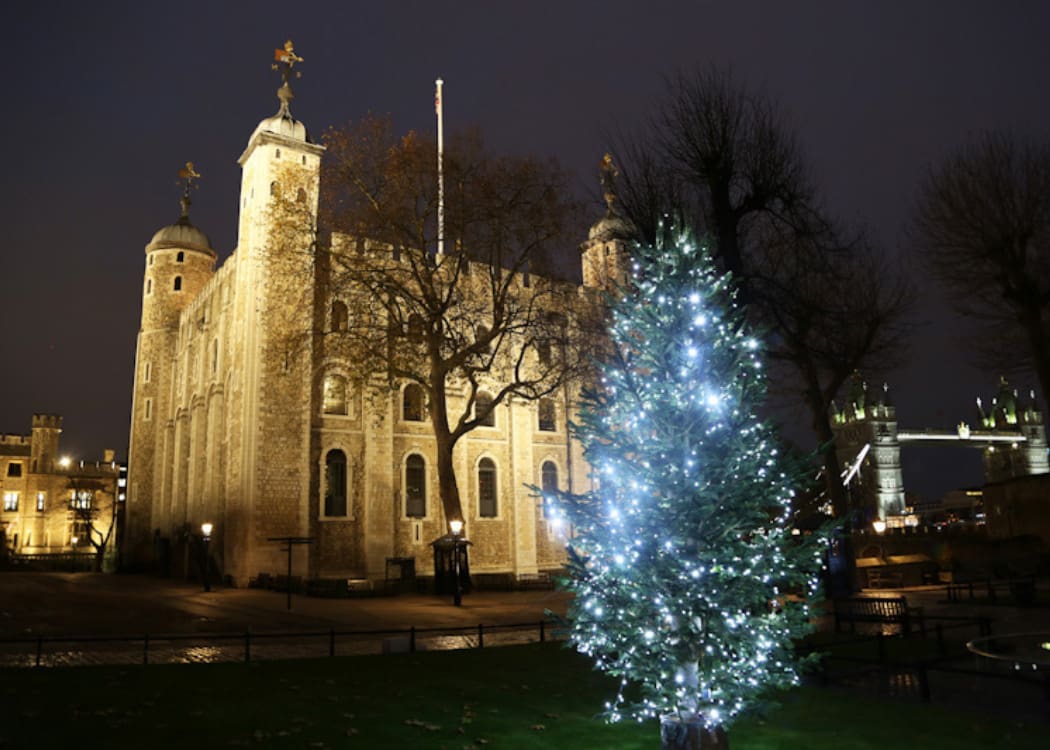England is a fantastic destination at any time of the year thanks to its many indoor and outdoor attractions. However, the summer months are the best time to visit England to get the most out of the country’s stunning beaches, national parks, festivals, and historic sites.
Aside from a six-year stint in China, I’ve lived in England for most of my life and have spent countless days, weeks, and months exploring the country at all times of the year. There’s always something fun to do regardless of the weather; be it exploring one of the many fine museums, enjoying Britain’s varied cuisine, or hiking one of the many trails across the country.
If you’re wondering when to visit England for that dream vacation, you’ll find all that and more within this useful article. England has a somewhat bad reputation for its rainy weather, but the truth is, there are plenty of warm (even hot) sunny days throughout the year.
Below, I’ll let you know about the best month to visit England depending on what activities you’re interested in.
Overall Best Time To Visit England
The best time to visit England is anytime from late February to September to get the most out of your stay. As winter recedes, the country is awash in color from bluebells and daffodils and I’ve even been cycling in short sleeves in February before thanks to the slightly less chilling climate.
June to August is the best time to go to England to ensure the best of the weather with temperatures anywhere between 46 and 86 degrees Fahrenheit. 2022 was a particularly good year with long, hot spells in the mid to high eighties throughout the summer.
The shoulder seasons are also a great time to visit as there are fewer tourists and prices are generally cheaper than the peak holiday season. Although England is a relatively small country, the weather and temperatures can differ significantly between the north and south, with the south (especially the southwest) consistently seeing the best weather in the country.
Peak Season in England (June-August)
The peak season is the best time to travel to England to get the most out of the great outdoors. With miles of sandy beaches (check out these amazing beaches in Cornwall), coastal paths, and national parks such as the Lake District, Dartmoor, and Exmoor, this is the perfect time to explore England.
However, with the good weather come the crowds and prices are generally higher. Accommodation is likely to be your biggest expense and the prices can fluctuate depending on the time of year. That being said, it’s always possible to find good deals if you’re willing to shop around.
The peak season is also a fantastic time to experience some of England’s wonderful festivals from food and drink to literature, art, and music, there’s sure to be something going on of interest. It’s also the best time for camping, whether at a festival or not, and I’ve enjoyed living under canvas many times across the summer months.
Shoulder Season in England (March-May, and September-October)
The shoulder season is an excellent time to visit England with fewer crowds, cheaper prices, and plenty to see and do still. The weather is pleasant enough to spend time outside hiking, cycling, swimming, and surfing, plus, there are plenty of festivals and events around the country such as the St Ives Food Festival in Cornwall in May.
September is one of my favorite times to explore England with clear, sunny days and the colors of fall erupting around you. It’s a great time for country walks, enjoying quieter beaches, cycling, and exploring ancient ruins and historical sites, of which there are many.

There are fewer foreign tourists around during spring and fall, with mostly locals out and about enjoying the quieter towns and villages. It’s a good time to take advantage of the cheaper prices at this time of year and find some bargains. You can potentially make huge savings if you’re able to book in advance.
Off Season in England (November-February)
The off-season is the perfect time for a city break in England. Thanks to fewer tourists, hitting the London sights and attractions means much shorter queues, and the pleasure of walking around the pleasant cities of York, Bath, Cambridge, and Oxford without hordes of visitors ruining the perfect selfie.
I love exploring England’s towns and cities during the winter, and there are still plenty of opportunities to get outdoors for a hike, followed by a mug of something hot in a rustic pub with a roaring fire. By traveling in winter you’ll benefit from the best possible prices (though Christmas and New year can get pricey).
There’s lots going on in winter from Christmas markets and mulled wine to New Year celebrations, and even one of the country’s most popular beer festivals, the Great British Beer Fest that happens in Burton on Trent in February (there’s also a summer event in August).
When to Visit England For Beaches
There’s no denying that the summer is the best time to hit England’s wonderful beaches. With the warmest outside and sea temperatures, from June to August, you can take a cooling dip in the ocean without the need for a wetsuit. This is the best time to visit England for surfing, swimming, boating, coasteering, and more.
Some of the best beach destinations in the country include Newquay in Cornwall, Southwold in Suffolk, Brighton in East Sussex, and Woolacombe in Devon. The southwest of England sees average higher temperatures than the rest of the country (and also has the best beaches in my opinion).
The best time to visit England’s beaches is before the school holidays so June and the first half of July will see the beaches quieter than August and the height of summer. Prices will also be cheaper before the schools break up for summer.
When to Visit England For Festivals
Summer is also the best time to go to England for the many excellent festivals it hosts. A lot of the festivals include camping options (and increasingly glamping too now) so the warm and dry summer makes perfect sense for outdoor living.
With music festivals such as Reading and Leeds, Download, Lattitude, and of course Glastonbury, there’s something to suit all tastes in music. I recently went to Download to watch Iron Maiden and it was one of the best live experiences I’ve had to date.
Festivals like Lattitude and Camp Bestival are great family options with activities for kids, lots of food options, and plenty of good music to keep the adults entertained (and the odd glass of wine too of course).
When to Visit England For Cities
England’s cities can be visited at any time, however, saving them for the shoulder and winter seasons makes a lot of sense as there are plenty of indoor attractions to keep you occupied if the weather takes a turn for the worse. Visiting outside of the summer also means cities will be quieter with tourists and accommodation prices will be cheaper.
I’ve traveled to many of the cities in England at all times of the year, and usually prefer traveling in winter. London, for example, can be stifling in summer, and traveling on a packed tube (subway) train in 90-degree heat is no fun I can tell you (that being said, summer is a great time to enjoy London’s many gorgeous parks).
Some of my favorite cities to visit include:
London – with so many world-famous attractions, shops, restaurants, and bars it’s a no-brainer.
York – a gorgeous cathedral city with cobbled streets, and boutique shops that’s surrounded by beautiful moorland.
Exeter – a laid-back city in southwest England and the gateway for Dartmoor National Park and Cornwall.
Brighton – this famous seaside city in southern England is best known for its beaches, quirky shops, and great nightlife.
Liverpool – historic northern city that’s famous for producing the Beatles.
Colchester – the UK’s newest city (granted city status in 2022 for the Queen’s Diamond Jubilee) and my hometown.

When to Visit England For Historical Sites
If you’re looking at when to visit England to see its many interesting historical sites, then the shoulder seasons of spring and fall are best. You’ll still be able to enjoy sites such as Stonehenge, Windsor Castle, the Tower of London, and more with fine weather, but you’ll find far fewer tourists than in the summer months.
Some of my favorite historical sites in England include the Roman baths at Bath, Tintagel Castle in Cornwall, and West Stow Anglo Saxon Village and Sutton Hoo in Suffolk where an ancient Saxon King was discovered. Each of these unique attractions are steeped in folklore from Ancient Rome to King Arthur, Saxon kings, and more.
When to Visit England For Surfing
For first-time surfers, summer is the best time to visit England to enjoy this adrenaline-fuelled activity. In summer, there are lots of surf-schools offering lessons, beaches are patrolled by lifeguards, and the weather is warm enough to surf without a wetsuit (though many people still opt to wear one).
The shoulder season is also a good time to surf in England as there are fewer people on the beaches and more opportunities to catch some great waves without the worry of colliding with anyone. I’ve surfed in England from around May through to September and recommend these as the optimal months.
For more experienced surfers, England, and especially the surfing beaches in Cornwall, can be surfed year-round within reason. The winter months will see some massive waves hit the north Cornish coast, so for real pros, this is the time to hit the empty beaches and catch some huge swells.
When to Visit England For Cheap Prices
The best time of year to visit England for cheap prices is any time outside of peak season (June to August) and school holidays (half-term, Easter, Christmas, etc). Accommodation will be cheapest in winter (though not around Christmas and New Year), and you can predict prices start to drop in September after the kids go back to school.
I’ve traveled around England many times out of season and this is a great time to explore some of the prettiest towns and villages across the country such as the Cotswolds, Devon, and Cornwall. If you’re looking to shop while in England, then be sure to take advantage of the January sales across many stores.
When to Visit England For Hiking
Hiking is a joy in England at any time of year as the country isn’t affected by extreme weather conditions or temperatures (hot and cold) compared to other parts of the world. As with surfing, the months from May through to September are perfect for exploring England on foot and they offer the best weather for a picnic.
Winter can also be a good time for hiking and I’ve gone on England walks and hikes in winter ever since childhood. There’s nothing quite like wrapping up warm and trudging over fields and along country lanes when you know there’s a nice pub and a roaring fire as a reward at the end.
Some of my favorite hikes/walks include:
Dedham to Flatford Mill, Essex/Suffolk – this hike along the River Stour takes in many of the scenes put to canvas by the celebrated painter John Constable (and thus the area is known as Constable Country).
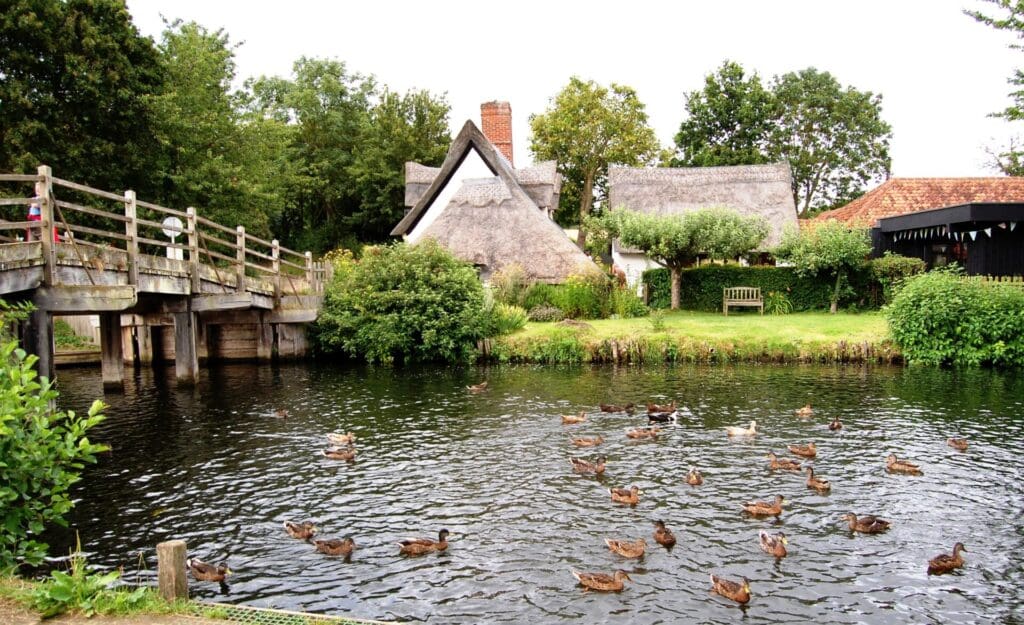
Polzeath to Port Isaac, Cornwall – one of the most scenic hiking trails in the country with hidden coves, deserted beaches, abandoned fisherman’s cottages, and a great selection of pubs at the end.
England’s National Parks are also the perfect place for walking and hiking with many tracks and trails ranging in length and difficulty from easy to arduous. Dartmoor, Exmoor, the Lake District, and the North Yorkshire Moors are all places I’ve hiked and each offer something unique for its visitors.
The Best Time to Visit England By Month
Below, you’ll find a breakdown of the weather in England for each month of the year. I’ve used London for the average temperatures and rainfall, and Newquay for the water temperature. You’ll also discover some of the best activities and things to do during each month, from festivals to hikes and historic attractions.
England in January
The weather in England in January is cold, wet, and wintery, and the coldest time of the year along with February.
Weather in England in January
Average temperatures in January range between lows of 39 degrees Fahrenheit and highs of 47, with sea temperatures between 46 and 49 Fahrenheit. January sees an average of 2.9 inches of rain (including sleet and snow). Temperatures around the coast and on higher ground will be a degree or two colder.
There is the possibility of snow in England in January, mainly on higher ground and in northern areas. The south, and particularly the southwest of England see warmer temperatures than the midlands and northern areas, where the rainfall is also higher.
Things To Do in England in January
January is a good time to explore London’s major sights without throngs of tourists and long queues. Ride the London Eye, see the waxworks at Madam Tausads, visit Buckingham Palace, and explore the 1,000-year-old Windsor Castle. January also sees the Colchester Real Ale Festival – one of my favorite winter treats.
This tour to the Warner Bros Studios is an excellent option for Harry Potter fans and includes transport from London, a trip around the sets, and a ride on the Hogwarts Express. The annual New Year’s Day Parade in London takes place at 12 pm on the 1st of January each year and sets off from Piccadilly.
England in February
England in February is still cold and wet but as the final winter month, spring is just around the corner.
Weather in England in February
Average temperatures in February range between lows of 39 degrees Fahrenheit and highs of 48, with sea temperatures between 48 and 51 Fahrenheit. February sees an average of 1.6 inches of precipitation (rain, sleet, and snow).
As with January, there’s more chance of snow across England in February, though that being said, towards the end of the month the first signs of spring start to make themselves known and it’s a great time to get outside after the long winter months.
Things To Do in England in February
There are plenty of fun things to do in England in February from exploring cities such as York and Liverpool and their many interesting experiences including the Jorvik Viking Centre and Beatles Story.
Even though February can sometimes feel a little dreary as everyone tires of winter, there’s still plenty going on up and down the country from the Six Nations rugby tournament (you won’t have to look far for pubs showing the games) and the Dark Skies Festival for stargazing.
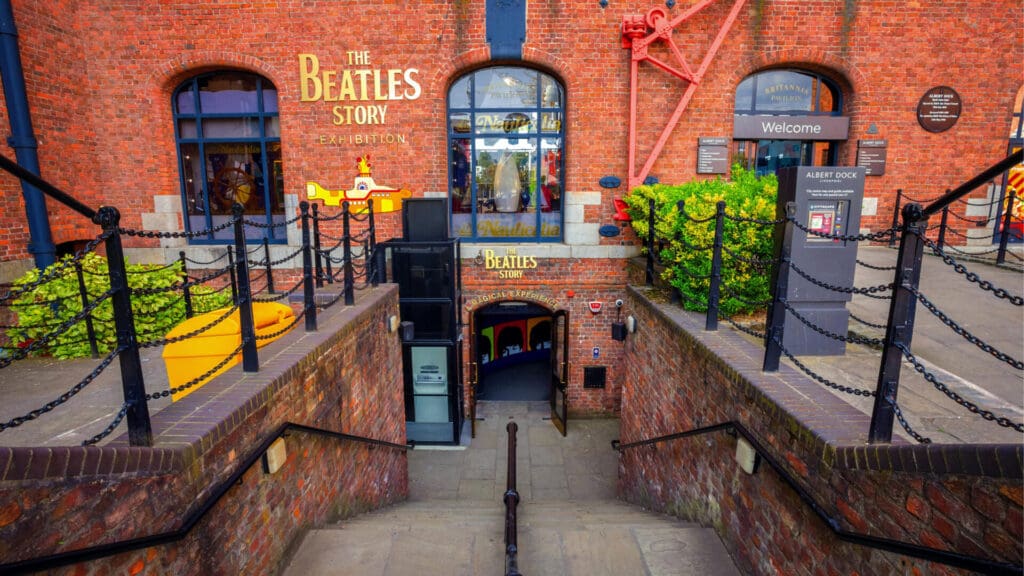
England in March
As the bluebells and daffodils brighten the lanes and parks of England, March is the perfect time to get back outside again.
Weather in England in March
Average temperatures in March range between lows of 42 degrees Fahrenheit and highs of 52, with sea temperatures between 48 and 50 Fahrenheit. March sees an average of 1.5 inches of rain. This is a great time to be out and about in England as March is one of the driest months of the year.
In March, England starts to warm up a little with more chance of clear and sunny days. The south of England will see the warmest temperatures, with the north being cooler, especially by the coast and on higher ground.
Things To Do in England in March
March is a great time to get outside and hit some of the scenic hiking paths around the country like the coast paths in Cornwall. It’s also a great time for day trips like this excellent tour of Canterbury and Dover which I did myself in March a few years back.
The famous Oxford and Cambridge boat race takes place in March each year where the two prestigious university towns go head to head down the Tideway in south London. And although it’s an Irish festival, St Patrick’s Day is celebrated in pubs across England on 17th March with plenty of promotions, live music, and of course Guinness.
England in April
Don’t let a few “April showers” stop you from experiencing England at its finest! In spring as the country looks towards summer and it’s a beautiful time to travel.
Weather in England in April
Average temperatures in April range between lows of 45 degrees Fahrenheit and highs of 58, with sea temperatures between 49 and 53 Fahrenheit. April sees an average of 1.5 inches of rain. Temperatures around the coast and on higher ground will be a degree or two colder and the south of England will see the warmest and driest weather.
Things To Do in England in April
There’s a whole lot going on in England in April as the weather lends itself to more outdoor activities. St George’s Day celebrations take place on the 23rd of each year with lots of street parties, events, and activities. The Cheltenham Jazz Festival brings acts from all over the world to perform in the town, which is also a great base for exploring the charming Cotswolds.
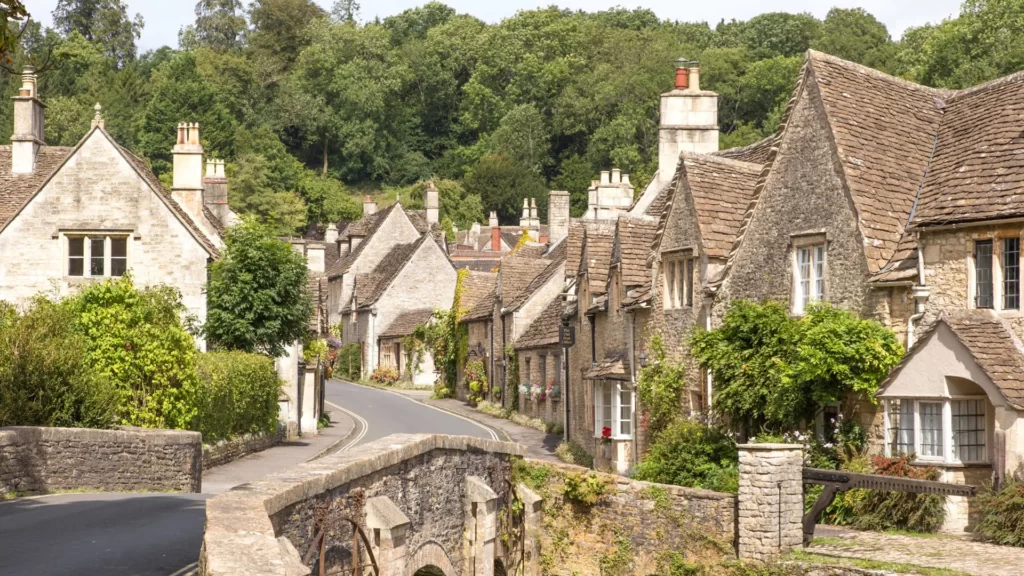
England in May
With clear blue skies and little rain, May is a wonderful time to explore all England has to offer.
Weather in England in May
Average temperatures in May range between lows of 50 degrees Fahrenheit and highs of 63, with sea temperatures between 52 and 55 Fahrenheit. May sees an average of 1.8 inches of rain. As England welcomes May, temperatures are pleasant enough to sit outside in short sleeves during the day, but the evenings will still be cool.
Southern England sees the best weather and it can still be cool in the north and in mountainous parts of the country such as around the Lake District and the border with Scotland.
Things To Do in England in May
In May, the Chelsea Flower Show kicks off with one of the largest horticultural events on the calendar. Chelsea is also well-placed for exploring London’s cracking nightlife and as the evenings get lighter, it’s the perfect time to enjoy a good old-fashioned bar crawl.
The Brighton Festival also takes place over three weeks in May and this vibrant city is filled with song, dance, theater, food, and drink. The weather is also good enough to explore the South Downs and take a dip at one of the many wonderful beaches around Brighton and along England’s beautiful south coast.
England in June
June is when England really comes alive with sunshine, blue skies, and many excellent festivals and activities across the country.
Weather in England in June
Average temperatures in June range between lows of 55 degrees Fahrenheit and highs of 69, with sea temperatures between 55 and 60 Fahrenheit. June sees an average of 1.8 inches of rain. England in June is a beautiful time to get outside and make the most of the British summertime with warm, sunny days and the longest day of the year to enjoy.
June is one of the most pleasant months in England with lots of warm and sunny days perfect for BBQs and other outdoor activities.
Things To Do in England in June
June sees the Glastonbury Festival, which is one of the largest and most famous music festivals in the world (the equivalent of Woodstock in the USA). The festival is set close to the beautiful town of Glastonbury which is steeped in folklore and home to many boutique shops.
The 21st of June is the summer solstice and this is a great opportunity to see Stonehenge in all its glory (which incidentally is not far from Glastonbury). The Isle of Wight Festival also takes place in June and is an excellent festival on a small island in the English Channel.

England in July
July is a wonderful month in England with some of the warmest weather of the year, perfect for days outside and al fresco dining.
Weather in England in July
Average temperatures in July range between lows of 59 degrees Fahrenheit and highs of 73, with sea temperatures between 59 and 64 Fahrenheit. July sees an average of 2.2 inches of rain.
July is one of the best months to visit England for the weather. Long, warm, and sunny days are interspersed with the odd downpour, but those are usually short-lived. This is one of the best times for exploring the coast and beaches.
Things To Do in England in July
The Wimbledon tennis championship is one of the highlights of summer in England and each July you can enjoy strawberries and cream, a glass of Pimms and lemonade, and watch tennis heavyweights battle it out on Centre Court. For those that prefer a little more oomph, the British Formula 1 Grand Prix is held at Silverstone in July.
There are some excellent festivals that take place in July such as Lattitude in Suffolk (an excellent family option with music, entertainment, food, and drink).
England in August
August in England is the peak holiday season and up and down the country locals and tourists alike flock to the beaches, national parks, towns, and cities for days out.
Weather in England in August
Average temperatures in August range between lows of 59 degrees Fahrenheit and highs of 72, with sea temperatures between 61 and 64 Fahrenheit. August sees an average of 2.3 inches of rain.
The ocean is at its warmest in August so is perfect for exploring the many wonderful beaches around the country – Cornwall has the highest temperatures in the whole of the UK.
Things To Do in England in August
August is the best time to be in the water with such fine weather. In Devon and Cornwall activities such as surfing and coasteering are a must-try and some of my favorite things to do in summer. It’s also a great time to be out walking and exploring the small towns and villages of England.
One of England’s largest dance festivals, Creamfields, is held each August near Liverpool with top acts covering a range of electronica from house to EDM, trance, dubstep and more. For those that prefer something a little more rock, August also sees the Reading and Leeds festivals with artists as diverse as Billie Eilish, the Killers, and Imagine Dragons.
England in September
September is a wonderful time to spend in England as the summer crowds recede and the colors of fall begin to appear.
Weather in England in September
Average temperatures in September range between lows of 55 degrees Fahrenheit and highs of 67, with sea temperatures between 60 and 63 Fahrenheit. September sees an average of 2 inches of rain.
This is one of my favorite months as the weather is still warm and you can still enjoy long evenings outside, perfect for beer gardens and al-fresco dining, (though it can get chilly after the sun sets).
Things To Do in England in September
September is a perfect time of year for hiking with clear days and mild weather. Exploring the Lake District, Dartmoor National Park and England’s gorgeous coastline is something I love to do in September.
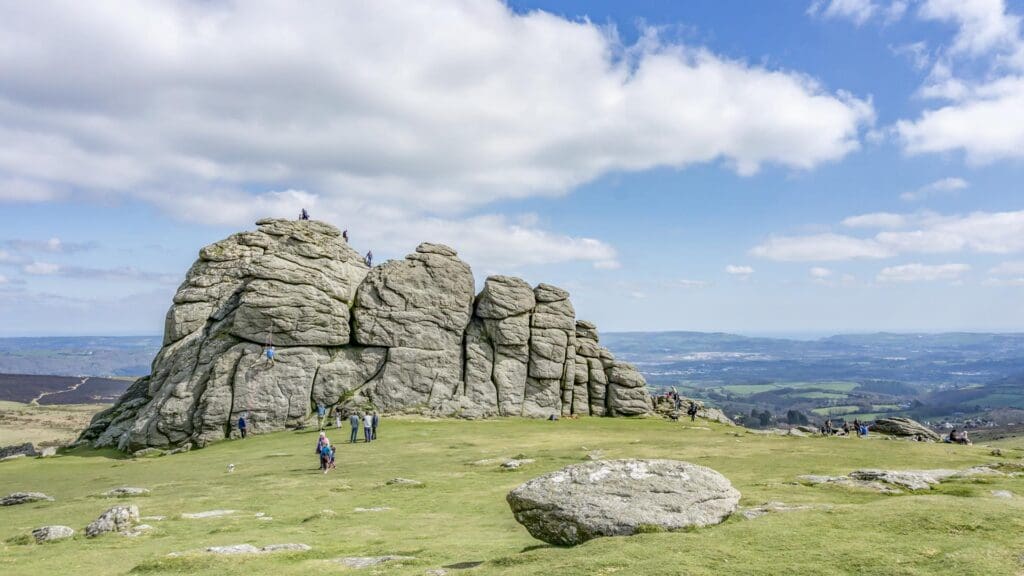
The British Science Festival kick’s off in September in Chelmsford just outside London (close to where I grew up). This is a great event for the whole family and curious kids can get involved with the hands-on exhibits, while adults can attend lectures by some of the top UK scientists.
England in October
The crunch of leaves underfoot, fall colors, and homely pubs are what make England in September the perfect place to be.
Weather in England in October
Average temperatures in October range between lows of 50 degrees Fahrenheit and highs of 60, with sea temperatures between 57 and 60 Fahrenheit. October sees an average of 2.2 inches of rain. October is one of the wettest months in England as summer recedes from view, however, there are still many pleasant, sunny days.
The month of October can be quite wet, but that’s never stopped me from getting out and about. Pack a brolly (umbrella) and waterproofs, and you can still explore all England has to offer outside or in.
Things To Do in England in October
Walking is a great activity for the cooler month of October, and it’s even better if you can plan your route around a nice village pub, which often isn’t difficult! There’s still plenty going on across the country such as the Cheltenham Literature Festival and the BFI Film Festival at London’s Southbank (the Southbank is one of my favorite parts of London to explore).
Sampling some of England’s wonderful foods is a great thing to do in October. From Borough Market in London to Michelin-starred restaurants in Cornwall or rustic pubs up and down the country, it’s easy to find excellent dining options around England.
England in November
November in England is characteristically cold and wet, but there’s still plenty to do inside and out.
Weather in England in November
Average temperatures in November range between lows of 44 degrees Fahrenheit and highs of 53, with sea temperatures between 55 and 57 Fahrenheit. November sees an average of 2.5 inches of rain making it one of the wettest months of the year along with October.
November is the time to wrap up warm, especially in northern England where temperatures can drop below freezing. It rarely freezes in the south in November and inland areas will be a degree or two warmer than by the coast.
Things To Do in England in November
Bonfires, brisk winter walks, and Sunday pub lunches are some of my favorite things about this time of year. On 5th November Bonfire Night/Guy Forks is celebrated across the country with bonfires, fireworks, and warming winter drinks.
Every town, village, and city will have its own celebration, usually in the local park or village green.
The Leeds International Film Festival takes place in November and Winter Wonderland at London’s Royal Hyde Park opens. This is a great family day out and is also perfectly placed for exploring London’s other top attractions such as seeing the changing of the guard.

England in December
December is the most festive month in England with the towns and cities decked out in lights.
Weather in England in December
Average temperatures in December range between lows of 41 degrees Fahrenheit and highs of 49, with sea temperatures between 52 and 54 Fahrenheit. December sees an average of 1.9 inches of rain. Temperatures around the coast and on higher ground will be a degree or two colder.
Occasionally, England will see some snow in late December, although the white Christmas’ I remember as a kid seem to be few and far between these days.
Things To Do in England in December
December is the time to explore England’s Christmas markets, sip mulled wine, and get into the festive spirit. In Newcastle, there’s the annual Gateshead Winter Festival with shopping, fireworks displays, food, and drink. Checking out some of the country’s top museums, art galleries, and historic sites is fun to do on cold December days.
This tour of the Tower of London and Crown Jewels is a good option, as is the British Museum, Tate Britain, Cambridge Archaeological Museum, and the World Museum in Liverpool.
In Conclusion
Now you know when to travel to England to get the best out of your trip and enjoy the perfect weather to suit your interests and activities. So, if you fancy surfing in summer, walking in winter, or feasting in fall, there’s plenty to do in England at all times of the year.
The best time to visit England depends entirely on what you’re looking to do, so take this into account while planning. If you want to get the most out of England’s stunning scenery and beaches, then summer is the best option. If culture is more your thing then avoid the crowds and explore England’s great cities during the low season.
The post Best Time to Visit England (Weather and Costs) appeared first on Goats On The Road. Click here for more on travel.


